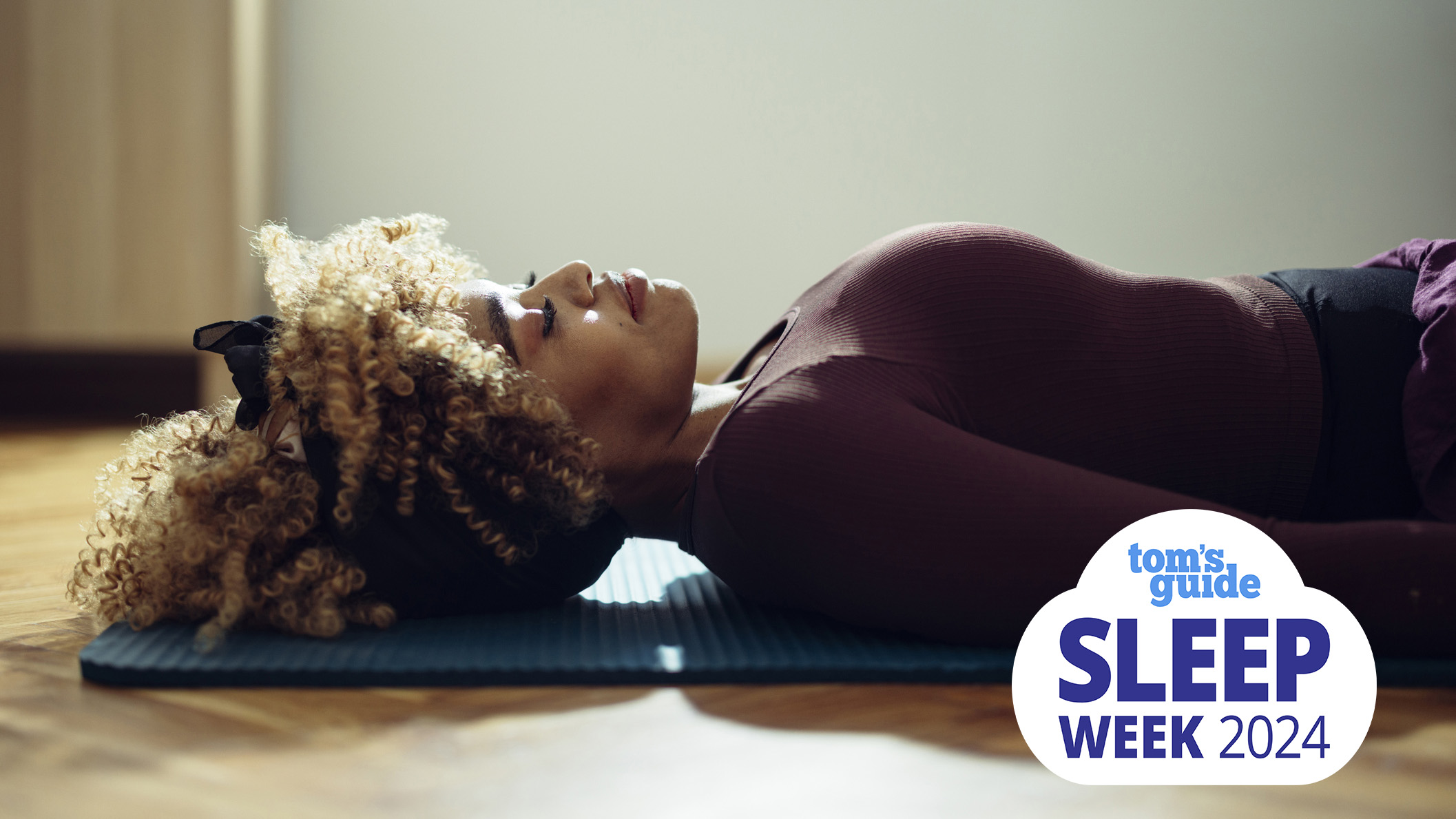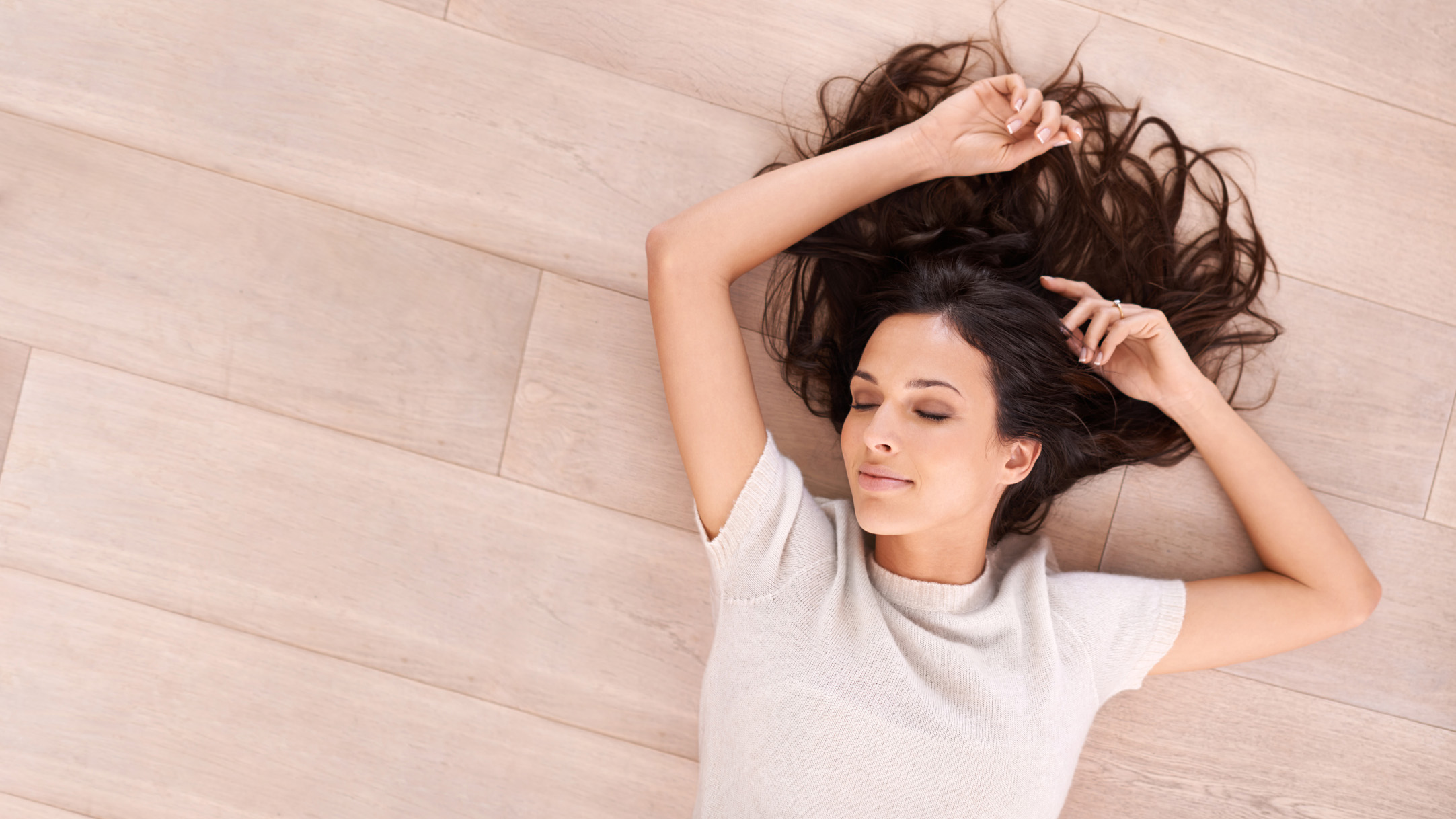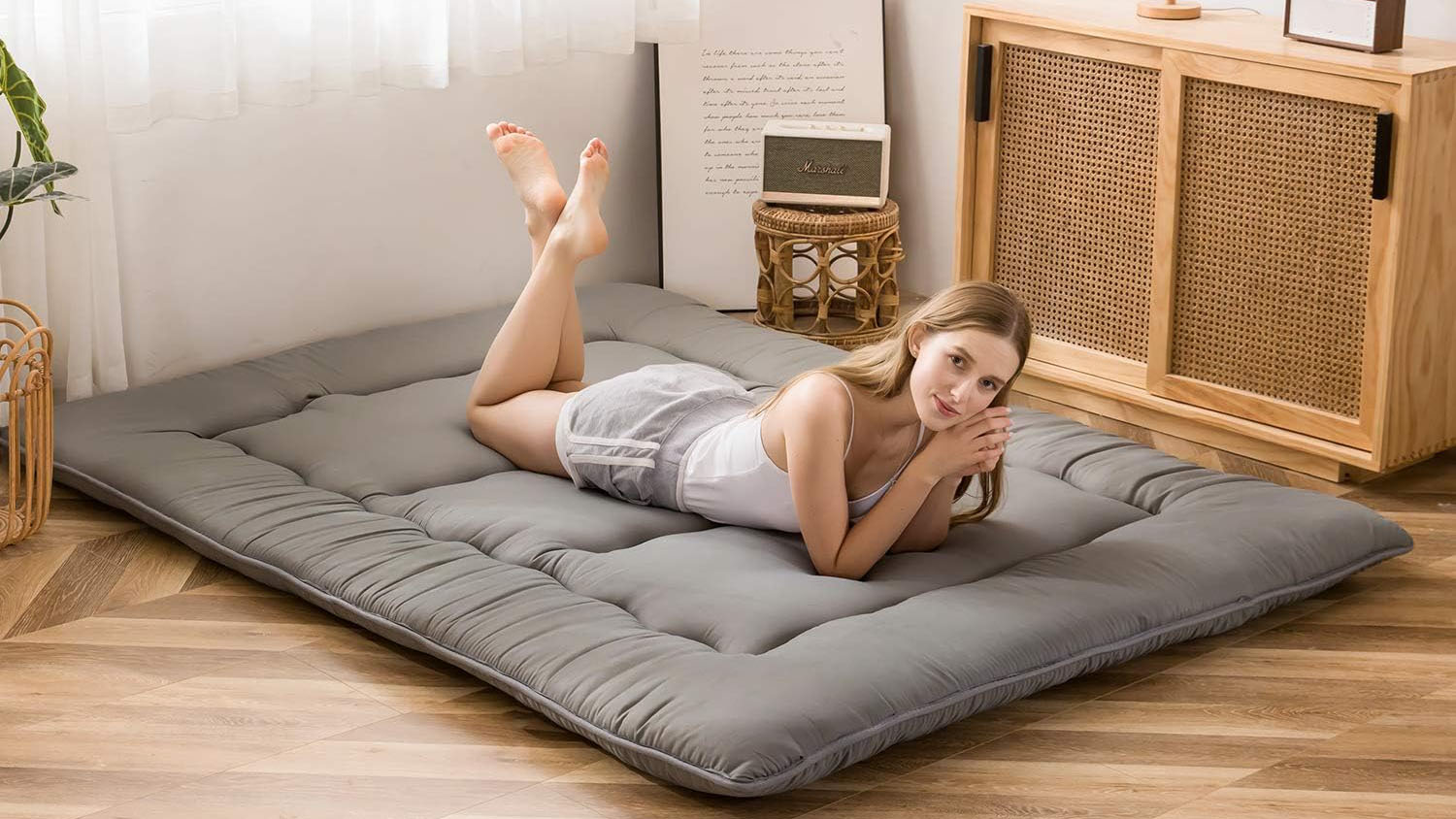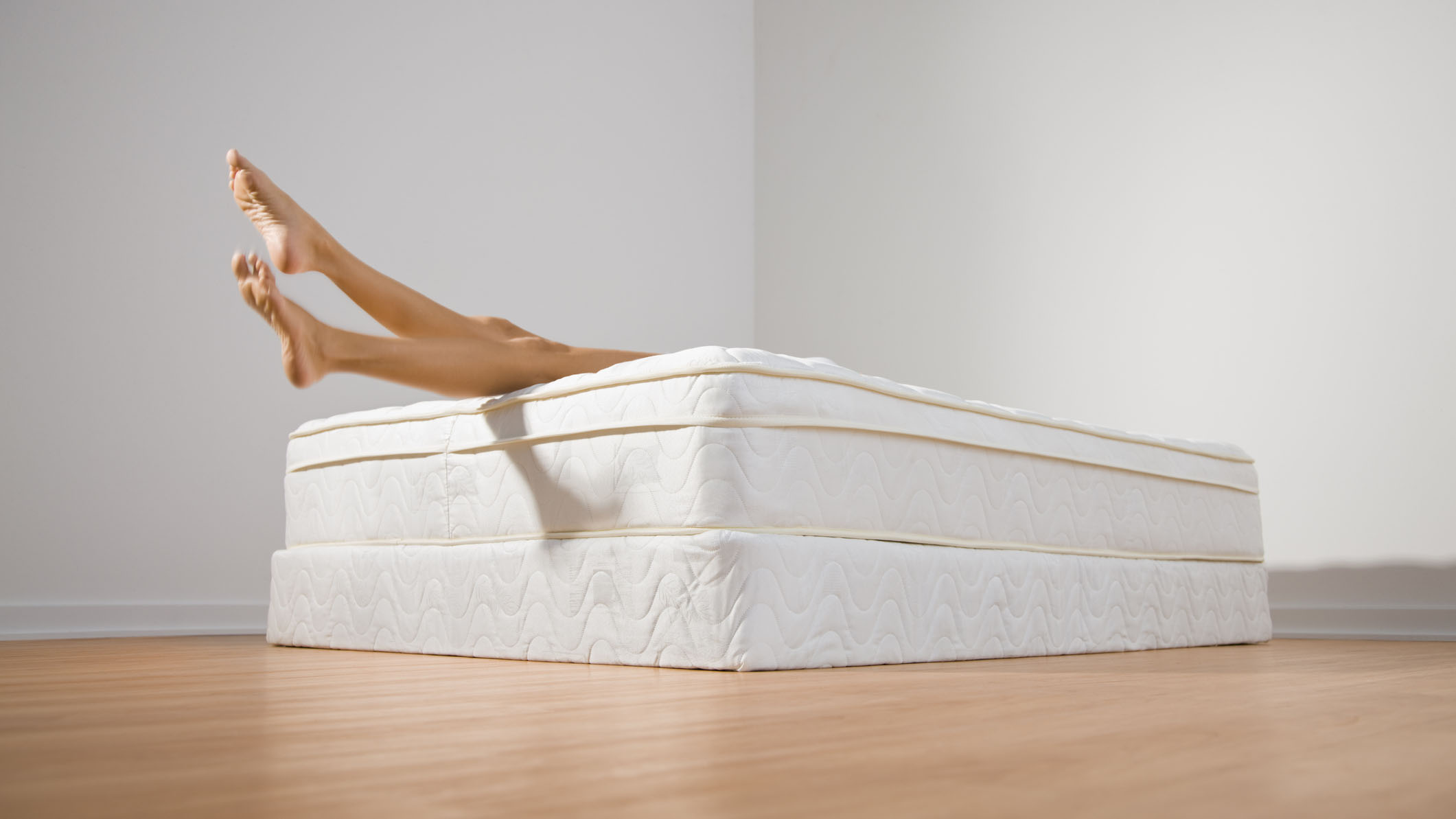Do you really need a mattress or is sleeping on the floor better for you?
We’ve all heard about barefoot walking, but can those principles be applied to sleeping on the floor?

Many of us have grown up sleeping on a mattress on a proper bed frame, complete with comfy pillows, and wouldn’t dream of sleeping on the floor. But as a mattress expert, I’ve seen quite a few people recently extolling the virtues of ditching their mattresses to sleep on the floor.
A large part of my job involves researching and testing the very best mattresses for all types of bodies, including for sleepers with back, hip and neck pain (something I have lots of personal experience with). I know from testing that there are dozens of great beds out there designed to promote a healthy spinal alignment during sleep, but is there something to all of this sleeping on the floor business?
I did a little digging for Sleep Awareness Week 2024. Here’s what I found out…
Nectar Mattress: up to 40% off at Nectar Sleep
During Sleep Awareness Week, you can save up to 40% on memory foam and hybrid mattresses at Nectar Sleep. We rate the Nectar Memory Foam as a great option for sleepers with a smaller budget seeking a breathable and supportive memory foam bed to relieve pressure on joints, reducing aches and pains. A queen is reduced to $649 in the US and £600 with a free bedding bundle in the UK. You'll also get a lifetime warranty and a year's sleep trial.
Is sleeping on the floor good for you?
At this time, there’s little research that shows obvious benefits of sleeping on the floor compared to sleeping on a mattress in a firmness that suits your sleeping position and body weight. That doesn't mean there aren't any – more that benefits can't be easily proven with research right now.
Many chiropractors and physical therapists say that a medium-firm feel is the perfect mattress firmness for most sleepers thinking about sleeping on the floor, as medium-firm beds offer a great balance of support and comfort for most body types and sleeping positions (stomach, back, side).

If you weigh over 230lbs and sleep on your back or stomach, you may benefit from an even firmer mattress with a score of around 8 out of 10 on the firmness scale. That’s because a firmer bed will give you the harder feel and stronger support you’re seeking through sleeping on the floor.
However, there are some health professionals who argue that sleeping on the floor is natural and that memory foam mattresses in particular inhibit our body’s inclinations to turn over in bed.
Sign up to get the BEST of Tom's Guide direct to your inbox.
Get instant access to breaking news, the hottest reviews, great deals and helpful tips.
Benefits of sleeping on the floor
I’ve spoken to a few people who swear that sleeping on the floor reduces their back pain within just a few days, but I haven’t found any quality research that proves this.
Your sleep posture might also be improved by sleeping on the floor – and in some cultures floor sleeping is actively encouraged as a way to protect good posture during sleep. This is because the spine curves to a degree on softer, cushioned surfaces such as a mattress, whereas it stays in alignment during floor sleeping.
During heatwaves, some people opt to sleep on the floor because it’s a cooler surface – mattresses can trap heat, especially all-foam beds designed without any cooling gels or temperature regulating covers, which are then placed on divans.
Drawbacks of sleeping on the floor vs a mattress
Sleeping on the floor puts you in direct contact with bacteria, bugs and allergens, not to mention dirt. If you are prone to allergies, floor sleeping could make them worse and your sleep could be derailed by an itchy nose, throat or eyes, or by sneezing through the night. This could lead to broken sleep and fatigue in the days. So you’ll need to keep on top of cleaning, especially vacuuming the floors and dusting nearby surfaces.

If you’re planning on putting your mattress on the floor (and ditching a bed frame), you’ll be exposing it to a higher risk of bacteria, dust mites and bed bugs. You’ll also need to care for it more than you would a mattress place on a compatible bed frame. You’ll have to lift the mattress off the floor regularly to air it underneath to prevent growth of mould and mildew.
Unlike sleeping on a mattress, you’ll also have a lack of zoned support when sleeping directly on the floor. This means you’ll create lots more pressure points and sleeping on your side in particular may feel very uncomfortable.
Tips for sleeping on the floor
If you are thinking of experimenting with sleeping on the floor, you’ll need to take it very slowly at first. Don’t jump straight from your mattress to a thin floor mat as your body needs time to acclimatise to increasingly harder surfaces. This is vital if your current mattress is deep and plush, with plenty of cushioning right on top.
If you have a mattress topper on your bed, and your mattress isn’t sagging, then I’d recommend starting the transition by removing that topper. Try that for a few nights, then place your mattress on the floor and sleep on that for a few nights (remember to air the mattress daily).
You could then put the mattress back on you bed frame and sleep on just the mattress topper on the floor for a few nights. Once you have become accustomed to that, transition to a thin mat or a yoga mat on the floor and see how you feel.
Sleeping on the floor is hard at first and it won’t suit everyone. People with health conditions and who are pregnant or have neck and back pain need to speak to their doctor before attempting it.
Can you put a mattress on the floor?
Mattresses made from memory foam are particularly sensitive to being placed on the floor, as the porous material is more prone to developing mildew and attracting bacteria when positioned this way. Mattresses need space to breathe to remain healthy, and they can’t do that when squished against your bedroom floor.

Here are the biggest issues with putting a mattress on the floor…
- It may develop mildew or mold – While of a higher risk for warmer climates, mattresses placed on the floor receive little airflow and offer a moist home for bugs.
- The mattress will feel hotter to sleep on – There's nowhere for air to circulate in a mattress placed on the floor, so your body heat will pool in the mattress.
- It can aggravate your allergies – Dust and dust mites will accumulate faster in a mattress placed directly on the floor versus one on a slatted base.
- It's a mecca for bed bugs – placing your mattress directly on the floor makes it easier for them to jump on and burrow in.
- You risk voiding the warranty – some brands caution that their mattresses must be placed on a compatible frame otherwise the warranty will be void.
How to healthily place a mattress on the floor
Mattresses on the floor require a lot more care and maintenance than mattresses placed on a compatible bedframe. But you can avoid the common mistakes people make when putting a mattress on the floor by following these tips. The first thing I'd recommend is to regularly clean the floor in your sleeping space, lifting the mattress up to sweep underneath. You should also vacuum your mattress weekly – top, bottom and sides – to reduce dust mites and the build up of dead skin.
I'd also highly recommend airing your mattress regularly each week by lifting it off the floor – ideally let it rest in direct sunshine, but beware of how UV rays can fade the fabric on some mattress covers.
You should also think about investing in a thin mat or board to act as a slim barrier between your mattress and the floor. Don't choose any fabrics that are prone to absorbing moisture though, as you'll soon be finding signs of mold on your mattress.

Claire is a Certified Sleep Science Coach and the Senior Sleep Editor at Tom's Guide who curates our mattress buying guides and oversees our rigorous mattress testing procedures. Claire has over 16 years’ product review experience and is connected to a wealth of globally renowned sleep experts including mattress designers and buyers, neuroscientists, and doctors of sleep medicine. Claire is responsible for all mattress and sleep content published on Tom’s Guide and is our expert on Saatva, DreamCloud, and Nectar mattresses. Claire is also certified to advise people on how to choose a mattress that suits their needs and budget, as well as helping them to create a nighttime routine and bedroom environment that helps them sleep better.

